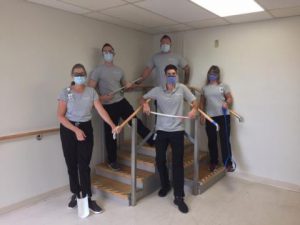Published On: October 5, 2020
 After being admitted to hospital because of a stroke, Sam needed a lot of help with the activities of daily living such as feeding, and getting to the bathroom. He also had problems responding to people and his environment. He did not make eye contact when people came into the room and when his meals arrived, he did not touch the food on the tray unless he was told that he needed to eat.
After being admitted to hospital because of a stroke, Sam needed a lot of help with the activities of daily living such as feeding, and getting to the bathroom. He also had problems responding to people and his environment. He did not make eye contact when people came into the room and when his meals arrived, he did not touch the food on the tray unless he was told that he needed to eat.
An OT was asked to assess Sam’s ability to carry out activities of daily living (ADLs) and see how safely he could return home. The OT found that Sam had “unilateral neglect“ – the stroke had caused brain damage which made Sam unaware of the left side of his body and people and things that were in his left field of vision. This affected his ability to do things on his own.
The OT worked with Sam to identify his goals and develop a plan, including ways to increase his awareness of the left side. The OT also worked with the hospital team to incorporate these strategies into everyday contact with him. Sam was referred to inpatient rehabilitation where he worked with the OT to increase his independence and safety in his everyday activities so he could return home.
Once Sam was ready to leave the hospital the OT went with him to his home. The OT suggested simple changes to the home and other strategies that would make it easier and safer for Sam to do the things he needed to do around the house. The OT also made plans for Sam to go to outpatient therapy and to be assessed again for driving in three to six months.
October is Occupational Therapy Month. Our team of OT’s at STEGH play an important role in helping patients – like Sam – to improve their quality of life by helping them to regain their independence.



